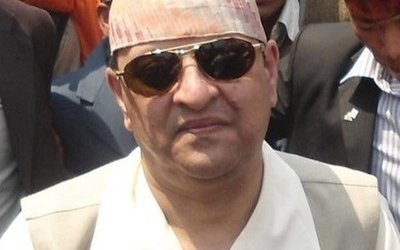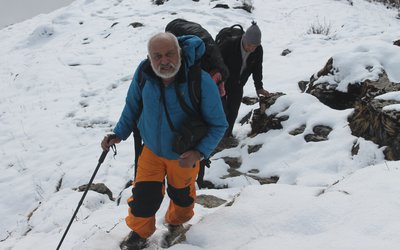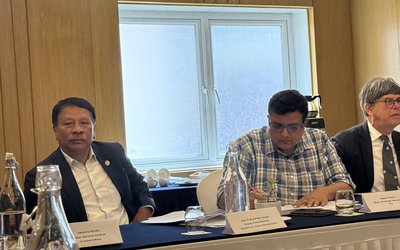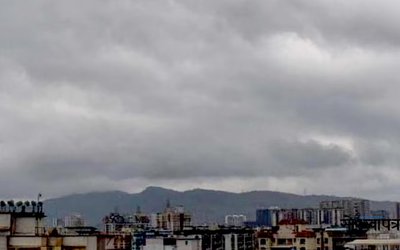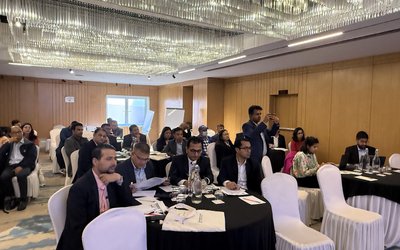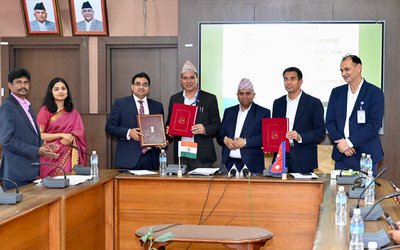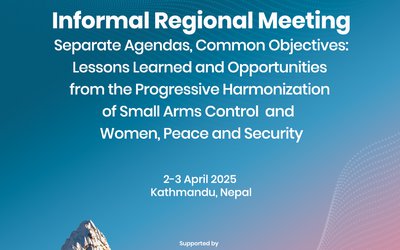
( Authors: Dr. Dilli Prasad Poudel, Rachana Upadhyaya, Dr. Netra Prasad Timsina)
The effects of the Coronavirus or COVID-19 have been very apparent as people, politics, and economics of the world have been brought down to a grinding halt. Almost all of the governments around the globe are grappling to contain the spread of the virus, and the government of Nepal is not an exception. A glimmer of hope of this lockdown is on the skills of global medical science. We all believe that sooner or later medical science will guide us back to a post-pandemic society. However, while dealing with it at present, it has laid threadbare the capacity of our government and other institutions which are involved in risk management. Following the 2015 earthquake, major strides were made in mainstreaming risk management; however, the institutions that came into existence as a legacy of learning from the 2015 disaster have not been that much visible as it should be in managing risk during this pandemic. And one such institution that has a greater role to be played at the community level, which has been overlooked, is the Ward level Disaster Management Committee (WDMC). WDMC is a mechanism created in the leadership of elected representative- Ward Chair, which exists in all 6743 wards of Nepal. The WDMC can play a crucial role in preventive measures of such pandemic through non-medical approaches such as awareness-raising on personal hygiene and physical distancing. The looming crisis of corvid-19can be an opportunity to strengthen WDMC- preparing it to manage risks in a volatile environment of the present world we live in.
The risk of the virus exists in an already disaster vulnerable society like ours. The increase in occurrence and frequency of both natural and non-natural disasters has become an everyday reality to the majority of Nepalese, ever so much for the people at the low economic means. We as a nation, face an average of 500 natural and non-natural hazards annually. Among them, earthquake, landslide, flood, fire, thunderstorms, and hailstorm have the greatest impact in terms of human casualties and property loss. The Asian Disaster Risk Center reports that there are two deaths per disaster and one disaster per day in Nepal. Leaving aside the road accidents, on average 900 people lose their lives and around 6,40,000 people are affected by some kind of disaster annually. According to the Ministry of Home Affairs (MoHA) about 2000 people lose their life and 13,000 people get injured due to the road accident every year. This is the highest average death of any single disaster per year in Nepal. Woefully, 80 percent of Nepali are affected by some form of disaster. Now living in such everyday reality, an active outbreak is not only a threat in itself, but also it significantly heightens the risk of other more common disasters, as monsoon approaches with concomitant floods and landslides.
Unlike the 2015 earthquake, we are facing the current crisis on a much stronger footing. A stable federal system of governance, with the power, devolved to the local authorities (at gaupalikas and municipalities) and legal mandates from the government through the Disaster Risk Reduction and Management Act, 2017 and the Local Government Operation Act, 2017- that guides the risk reduction, processes with the involvement of the local government. As learning from the 2015 earthquake, the policymakers adopted the community focused risk and disaster management strategies. These acts not only authorize local governments to implement programs to respond to the natural and non-natural disasters but also enact disaster preparedness measures. It opens up spaces of collaboration between the local government and non-government organizations including private sectors and Civil Society Organizations (CSOs). Additionally, they are authorized to establish a disaster management fund by getting support not only from the government but also from other national and international donors, private sectors and CSOs, and establish coordination between them while implementing disaster management fund. The disaster management act has also provisioned the declaration of disaster-prone areas and/or communities to prepare and reduce the risk of disaster/hazard before it occurs, and also to concentrate the management efforts to those who are in need urgently. Moreover, local government can also have their own research and development wing and develop the local emergency management system. According to the Local Government Operation Act 2017, local governments can also monitor and evaluate disaster management related local level policies, legislation, standards and plans.
Both acts are also fully decentralized. For instance, at the federal level, the Disaster Risk Reduction and Management Act 2017 provisions to form an Apex body headed by the Prime Minister, an Executive committee headed by the Minister of the MoHA, and a Disaster Management Authority headed by a Chief Executive Officer (CEO). Also, there are disaster management committees at the provinces (#7), districts (#77), municipalities (#276), rural municipalities, or gaupalikas (#460), and wards (#6743). These institutions follow the principle of inclusion, ensuring representation of the ‘vulnerable groups’ such as women, people from marginalized communities. However, in the present situation when even the best of the governments around the globe are overwhelmed, our government has grossly overlooked the same institutions that they designed to avert or manage a disaster. The more or less than the local governments are doing is commendable but is no-where near to the scale of work that is required to safely guide the community/country out of this desperate situation. If the WDMC would have been adequately empowered and strengthened throughout the country, community mobilization for fighting against COVID 19 would have been scientifically more effective.
In terms of the policy, the ‘newly’ enacted acts adequately guide effective disaster management, both natural and non-natural. However, based on our on-going research in disaster management considering Tomorrow’s Cities of Nepal, we have found that the local governments lack knowledge, resource and technology substantially. At this moment of the increasing threat of COVID-19, the WDMC, which is formed within the lowest administrative and political unit of Nepal, can be instrumental to facilitate the government in terms of finding suspected or infected community members, putting them in quarantine and/or isolation, disseminating instructions or messages shared by the provincial and federal government, and delivering material services (ration for poor and marginalized), which eventually may help to reduce the risk of spreading the virus. Although some of these activities are being done by the local government, the WDMC has not played the functional role it was supposed to play in a crisis situation. Bringing WDMC to the forefront in responding to the looming crisis can be an effective measure in making the community understand the importance of the present lockdown, the necessity of physical distancing and the ways to conduct oneself once the lockdown will be gradually lifted. Engaging such legal institutions rather than forming ad-hoc committees when the crisis is on our doorsteps will help strengthen the capacity of the present institution and also create an institutional memory for potential future disasters.
But, in many parts of the country, WDMCs is not much functional because of the lack of resources, capacity and knowledge as the provincial and federal government have not prioritized the multi-hazard disaster risk resiliency as an important issue to be addressed. Perhaps the present threat of coronavirus has made us aware of the need for a functional disaster management unit in the communities. This is also the moment that the federal and provincial governments should promote and nurture WDMC and provide resources and technology considering not only to respond and mitigate the effect of COVID-19 but also to manage the local natural and non-natural disaster in the future. The present crisis of COVID-19 is also an opportunity for the International/Non-Governmental Organizations (I/NGOs), which has announced spending 1 billion Nepali rupees of their budget in responding and mitigating COVID-19, to assist the government in strengthening institutional structure of WDMC. Moreover, the government has to facilitate and train WDMC to work on disaster risk reduction (DRR) to achieve both disaster management goals and local development efforts. Eventually, strengthening and promoting WDMC to ensure effective community engagement can be instrumental to achieve the objectives of the Sendai Framework for Disaster Risk Reduction 2015-2030, and the Sustainable Development Goals 2030.
Authors are researchers at Southasia Institute of Advanced Studies (SIAS)


